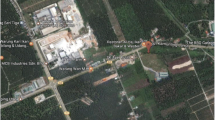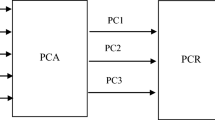Abstract
In this study, several multivariate methods were used for forecasting hourly PM10 concentrations at four locations based on SO2 and meteorological data from the previous period. According to the results, boosted decision trees and multi-layer perceptrons yielded the best predictions. The forecasting performances were similar for all examined locations, despite the additional PM10 spatio-temporal analysis showed that the sites were affected by different emission sources, topographic and microclimatic conditions. The best prediction of PM10 concentrations was obtained for industrial sites, probably due to the simplicity and regularity of dominant pollutant emissions on a daily basis. Conversely, somewhat weaker forecast accuracy was achieved at urban canyon avenue, which can be attributed to the specific urban morphology and most diverse emission sources. In conclusion to this, the integration of advanced multivariate methods in air quality forecasting systems could enhance accuracy and provide the basis for efficient decision-making in environmental regulatory management.





Similar content being viewed by others
References
Brun R, Rademakers F (1997) ROOT—an object oriented data analysis framework. Nucl Instrum Methods A 389:81–86
Carslaw DC, Ropkins K (2012) Openair-an R package for air quality data analysis. Environ Model Softw 27:52–61
Cobourn WG (2010) An enhanced PM2.5 air quality forecast model based on nonlinear regression and back-trajectory concentrations. Atmos Environ 44:3015–3023
Fang Y, Mauzerall DL, Liu J, Fiore AM, Horowitz LW (2013) Impacts of 21st century climate change on global air pollution-related premature mortality. Clim Change 121:239–253
Feng X, Li Q, Zhu Y, Hou J, Jin L, Wang J (2015) Artificial neural networks forecasting of PM2.5 pollution using air mass trajectory based geographic model and wavelet transformation. Atmos Environ 107:118–128
Fernando HJS, Mammarella MC, Grandoni G, Fedele P, Di Marco R, Dimitrova R, Hyde P (2012) Forecasting PM10 in metropolitan areas: efficacy of neural networks. Environ Pollut 163:62–67
Hoecker A, Speckmayer P, Stelzer J, Therhaag J, Von Toerne E, Voss H, Backes M, Carli T, Cohen O, Christov A, Dannheim D, Danilowski K, Henrot-Versille S, Jachowski M, Kraszewski K, Krasznahorkay A, Kruk M, Mahalalel Y, Ospanov R, Prudent X, Robert A, Schouten D, Tegenfeldt F, Voigt A, Voss K, Wolter M, Zemla A (2007) TMVA users guide—toolkit for multivariate data analysis, PoSACAT 040. http://arxiv.org/abs/physics/0703039. Accessed 14 June 2015
Lelieveld J, Evans JS, Fnais M, Giannadaki D, Pozzer A (2015) The contribution of outdoor air pollution sources to premature mortality on a global scale. Nature 525:367–371
Moustris KP, Larissi IK, Nastos PT, Koukouletsos KV, Paliatsos AG (2013) Development and application of artificial neural network modeling in forecasting PM10 levels in a Mediterranean city. Water Air Soil Pollut 224:1–11
Pai TY, Hanaki K, Chiou RJ (2013) Forecasting hourly roadside particulate matter in Taipei County of Taiwan based on first-order and one-variable grey model. CLEAN Soil Air Water 41:737–742
Perišić M, Stojić A, Stojić SS, Šoštarić A, Mijić Z, Rajšić S (2015) Estimation of required PM10 emission source reduction on the basis of a 10-year period data. Air Qual Atmos Health 8:379–389
Pretty R (2015) TheilSen {openair} tests for trends using Theil–Sen estimates. http://www.inside-r.org/packages/cran/openair/docs/TheilSen. Accessed 12 Dec 2015
Ruf T (1999) The Lomb-Scargle periodogram in biological rhythm research: analysis of incomplete and unequally spaced time-series. Biol Rhythm Res 30:178–201
Russo A, Soares AO (2014) Hybrid model for urban air pollution forecasting: a stochastic spatio-temporal approach. Math Geosci 46:75–93
Stanišić Stojić S, Stanišić N, Stojić A, Šoštarić A (2016) Single and combined effects of air pollutants on circulatory and respiratory system-related mortality in Belgrade, Serbia. J Toxicol Environ Health A 79:17–27
Stojić A, Maletić D, Stojić SS, Mijić Z, Šoštarić A (2015a) Forecasting of VOC emissions from traffic and industry using classification and regression multivariate methods. Sci Total Environ 521:19–26
Stojić A, Stojić SS, Mijić Z, Šoštarić A, Rajšić S (2015b) Spatio-temporal distribution of VOC emissions in urban area based on receptor modeling. Atmos Environ 106:71–79
Stojić A, Stanišić Stojić S, Reljin I, Čabarkapa M, Šoštarić A, Perišić M, Mijić Z (2016) Comprehensive analysis of PM10 in Belgrade urban area on the basis of long term measurements. Environ Sci Pollut Res. doi:10.1007/s11356-016-6266-4
Team RC (2012) R: a language and environment for statistical computing. http://cran.case.edu/web/packages/dplR/vignettes/timeseries-dplR.pdf. Accessed 10 June 2015
Vardoulakis S, Fisher BE, Pericleous K, Gonzalez-Flesca N (2003) Modelling air quality in street canyons: a review. Atmos Environ 37:155–182
Zhang Y, Bocquet M, Mallet V, Seigneur C, Baklanov A (2012) Real-time air quality forecasting, part I: history, techniques, and current status. Atmos Environ 60:632–655
Acknowledgements
This study was carried out as part of the Project No. III43007, III41011 and OI171002, financed by the Ministry of Education, Science and Technological Development of the Republic of Serbia for the period 2011–2016.
Author information
Authors and Affiliations
Corresponding author
Additional information
Editorial responsibility: An-Lei Wei.
Electronic supplementary material
Below is the link to the electronic supplementary material.
Rights and permissions
About this article
Cite this article
Perišić, M., Maletić, D., Stojić, S.S. et al. Forecasting hourly particulate matter concentrations based on the advanced multivariate methods. Int. J. Environ. Sci. Technol. 14, 1047–1054 (2017). https://doi.org/10.1007/s13762-016-1208-8
Received:
Revised:
Accepted:
Published:
Issue Date:
DOI: https://doi.org/10.1007/s13762-016-1208-8




